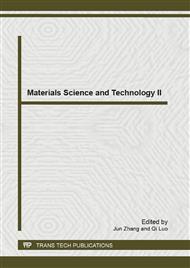p.199
p.203
p.209
p.214
p.218
p.223
p.228
p.235
p.240
Effect of Dynamic Strain Aging on the Creep Behavior of Zr-1Nb-1Sn-0.1Fe Alloy Tubes at Intermediate Temperatures
Abstract:
Zr1 Nb1 Sn0.2 Fe alloy exhibited the transition of the stress exponent from 6.5 to 7.5 in the lower stress region to 4.2 in the higher stress region. The reduction of stress exponent at high stresses in Zr1 Nb1 Sn0.2 Fe can be explained in terms of the dynamic solutedislocation effect. The temperature range of dynamic strain aging generally increases with increase of strain rate. The dynamic strain aging due to oxygen atoms observed in Zr alloys at temperatures between 300°C and 400°C during tensile test at the strain rate of 1 x10-3/sec should occur below 300°C in creep because the creep rates (1 x 10-6 and 1 x10-8) are much lower. Since solute atoms which can act as mobile obstacles are Sn and oxygen, the solute-dislocation interaction for the strengthening of creep resistance at intermediate temperatures is likely caused by Sn atoms. Dislocation networks and pile-ups around the precipitates were observed at the applied stress of 80MPa. And dislocations were observed to be distributed more or less randomly at the applied stress of 120 MPa. The more homogeneous distribution of dislocation in the region of low stress exponent at 120 MPa is thought to be caused by the dynamic strain aging effect of Sn atoms.
Info:
Periodical:
Pages:
218-222
Citation:
Online since:
July 2013
Authors:
Keywords:
Price:
Сopyright:
© 2013 Trans Tech Publications Ltd. All Rights Reserved
Share:
Citation:


